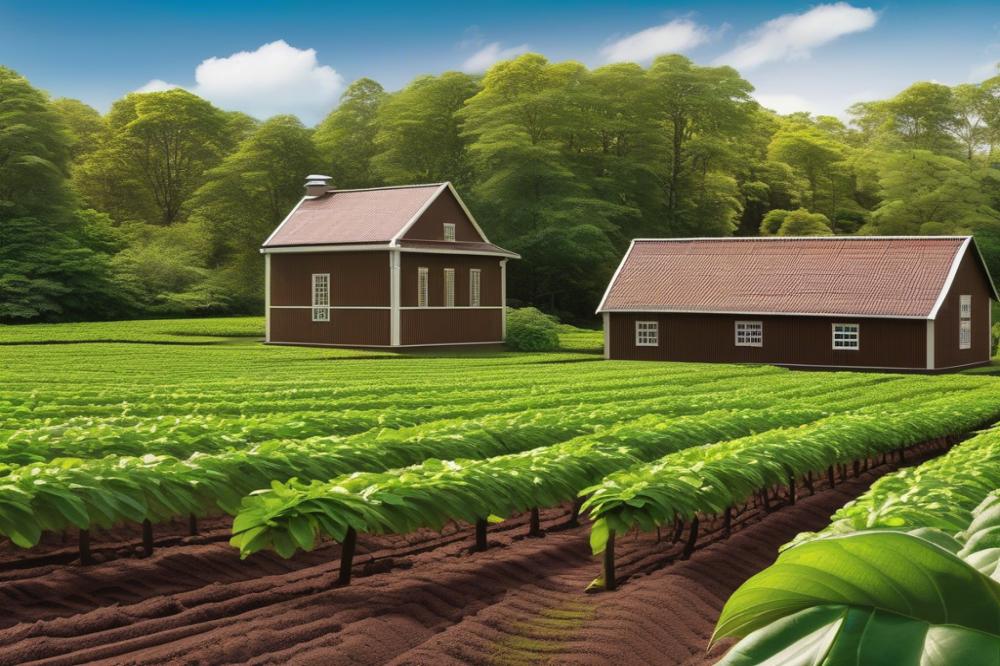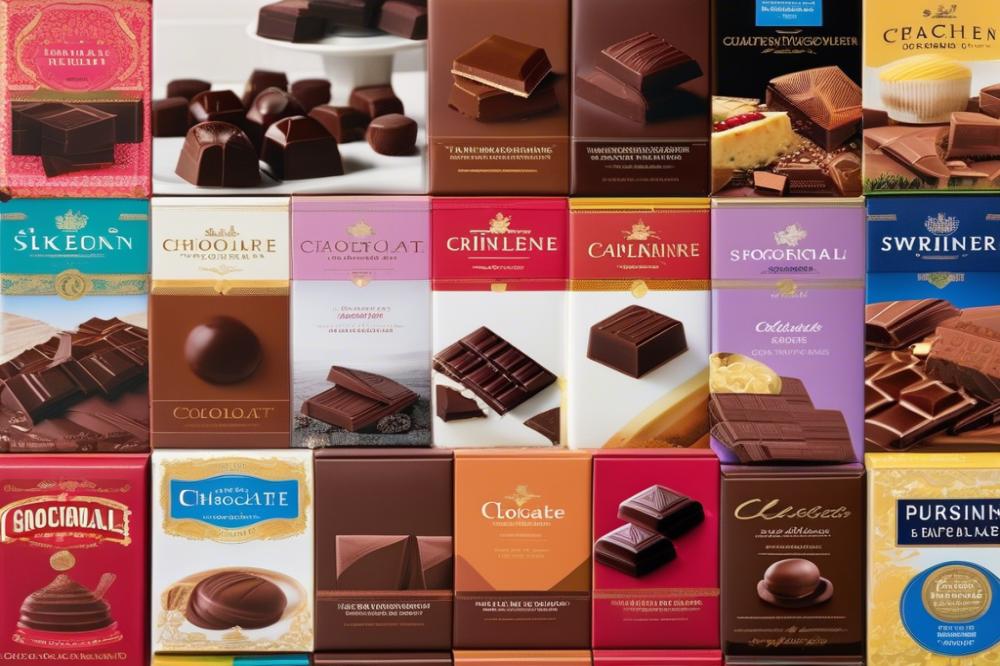Overview of Sweden’s Chocolate Story
Chocolate plays a significant role in European consumption, and Sweden is no exception. The country’s relationship with chocolate has evolved considerably over the years. From its early beginnings to the current focus on artisanal and gourmet products, Sweden’s chocolate journey mirrors wider trends observed across Europe.
In Swedish culture, chocolate is more than just a sweet treat. It occupies a special place in celebrations, traditions, and everyday life. Those enjoying ‘fika’—a cherished coffee break—often indulge in chocolate alongside pastries. Swedish desserts frequently showcase chocolate, highlighting its importance in local cuisine.
The history of chocolate in Sweden dates back to the 17th century when it was initially enjoyed as a drink. As time passed, the melting of chocolate bars into the mainstream occurred. This transformation laid the foundation for the emergence of well-known Swedish brands. Some of these have earned international accolades for their quality and flavor.
Today, trends focus on sustainability and ethical cocoa cultivation. Many brands are making conscious efforts to produce chocolate that respects the environment and supports farmers. Artisanal chocolates have also surged in popularity. These small-batch creations offer a fresh, unique flavor experience and reflect creativity in chocolate production.
Looking toward the future, innovations await in the realm of chocolate. Expectations include advancements in health-conscious options and new flavor combinations that cater to evolving consumer tastes. The future of history“>Sweden chocolate will not only celebrate the past but also embrace the exciting possibilities that lie ahead.
The History of Chocolate in Sweden

Chocolate made its debut in Sweden during the early 18th century. Initially, it was introduced as a drink, enjoyed primarily by the wealthy. Swedes first encountered chocolate through trade routes connecting Europe and the Americas. The exotic beverage quickly captivated those in high society, becoming a symbol of luxury.
In 1720, the first chocolate house opened in Stockholm, echoing trends seen in other European cities. This marked a pivotal moment in chocolate consumption. By the 18th century’s end, chocolate had gained popularity among various social classes. The shift from a luxurious drink to a treat accessible to more people began.
Importantly, trade played a significant role in shaping Swedish chocolate culture. Various imports from the Caribbean, particularly cocoa beans, fueled the growing appetite for chocolate. During the late 19th century, domestic production initiated a new era. Companies began to manufacture their own chocolate, creating notable brands that are still recognized today.
The 20th century saw the emergence of Swedish desserts that prominently featured chocolate. Cakes, pastries, and pralines became staple items in local bakeries. Artisanal chocolates gained traction, emphasizing quality over quantity. Higher standards in chocolate production led to a flourishing gourmet chocolate market.
In recent years, sustainability has become a crucial aspect of the industry. Many brands focus on ethical sourcing of cocoa, striving for a positive impact on both the environment and communities. Future innovations in chocolate may highlight even more sustainable practices.
As we look ahead, trends in Sweden’s chocolate scene suggest a fascination with unique flavors and blends. Consumers are drawn to artisanal chocolates that offer something special. This dedication to craftsmanship promises to influence Swedish chocolate for years to come.
Sweden’s Chocolate Production and Key Brands

Sweden’s relationship with chocolate is quite fascinating. While cocoa cultivation does not occur within its borders, Sweden has embraced this rich ingredient, transforming it into delightful treats. The cocoa beans usually come from tropical regions, such as Africa and South America. Once imported, they undergo various processes to create the sweet delicacies that Swedes adore.
Prominent Swedish Chocolate Brands
A few iconic brands lead the chocolate scene in Sweden. Marabou is perhaps the most famous, known for its smooth bars and unique flavors. Another notable mention is Fazer, which combines Finnish roots with Swedish tastes. These companies produce a wide array of chocolate, from everyday snacks to festive treats. Their products resonate well with both locals and tourists, showcasing the nation’s love for sweets.
In addition to these well-established brands, the rise of artisanal chocolates has gained momentum. Small-scale chocolatiers focus on gourmet chocolate, emphasizing quality over quantity. These producers often infuse local ingredients into their recipes, creating memorable flavors. From sea buckthorn to lingonberries, these flavors bring a taste of Sweden into each bite.
Artisanal versus Mass-Produced Chocolates
Mass-produced chocolates offer accessibility and variety, but artisanal chocolates shine with their craftsmanship. Artisanal producers often prioritize sustainability and ethical sourcing. They take great care in selecting ingredients, ensuring that the cocoa is ethically grown. This concern reflects a broader trend towards awareness and responsibility in food production.
Many people appreciate the rich history behind artisanal chocolates. They frequently utilize traditional methods, drawing on techniques passed down through generations. The result is a chocolate experience that tells a story, connecting consumers to the culture and craftsmanship of the region. In contrast, mass-produced options focus on consistency and widespread distribution, making them convenient but less personal.
Local Ingredients and Traditional Methods
Local ingredients play a significant role in defining Swedish desserts. Chocolatiers often incorporate elements found in their own kitchens—dairy, berries, and spices. This use of local produce enhances the overall flavor and creates a unique twist in traditional recipes. Using regional ingredients promotes sustainability and supports local farmers, contributing to a healthier ecosystem.
Future innovations in chocolate production may include new flavors and combinations that reflect changing tastes. As health trends emerge, some chocolatiers are exploring options like low-sugar or vegan chocolates. This evolution shows that Swedish chocolate is not just about indulgence; it’s also about adapting to consumer demands. With a blend of history, creativity, and sustainability, chocolate will continue to capture the hearts and taste buds of many.
Swedish Desserts and Chocolate Integration
Sweden has a rich tradition of desserts that often include chocolate. Many classic Swedish cakes and pastries showcase this beloved ingredient. For instance, Kladdkaka is a popular chocolate cake known for its gooey center. It has a long-standing association with both celebrations and casual gatherings. Often served with whipped cream or berries, this dessert reflects the balance of simplicity and indulgence.
Another significant treat is Chokladbollar, or chocolate balls. Made with oats, cocoa, and butter, these sweet bites are a staple for fika, a Swedish coffee break. The cultural importance of fika makes chocolate a central part of daily life. People enjoy these bites during social interactions, further elevating their status as a beloved dessert.
Over the years, chocolate has significantly influenced dessert trends in the country. Artisanal chocolates have gained popularity, with many local brands focusing on high-quality production. These gourmet options stand as a contrast to mass-produced varieties. There is a growing interest in sustainability as well. Many chocolatiers prioritize ethical cocoa cultivation and environmentally friendly practices.
Further exploration of Sweden’s dessert scene reveals a wave of creativity. Many chefs experiment with flavors, combining chocolate with traditional ingredients like cardamom or lingonberries. Such innovations reflect a commitment to honor history while looking toward future trends. The result is a plethora of desserts that are both nostalgic and modern.
Several brands stand out in the Swedish chocolate market. Their passion for craft-style chocolates celebrates uniqueness. Collaborations between local producers and chefs lead to exciting products. This merging of flavors captures the essence of contemporary Swedish desserts.
As the chocolate landscape evolves, future innovations promise to surprise consumers. New techniques in chocolate production may open doors to ultra-fine textures and distinctive tastes. The artisan sector will likely continue to thrive, as more people seek quality over quantity. In a world increasingly aware of sustainability, chocolate from responsible sources could become the norm.
In summary, the integration of chocolate into Swedish desserts paints a vivid picture of culture and tradition. Each treat tells a story, linking past to present, while also inviting future explorations. Excitement surrounds what lies ahead in Sweden’s chocolate journey.
Trends in the Swedish Chocolate Market
Current trends in chocolate consumption in Sweden show a move toward gourmet offerings. Shoppers are increasingly drawn to artisanal chocolates that offer high-quality ingredients and unique flavors. Major brands are now focusing on crafting authentic recipes that reflect Swedish culture. Consumers are looking for experiences that go beyond simple sweets.
The appeal of gourmet chocolate is undeniable. People enjoy tasting premium products made from carefully sourced cocoa. These chocolates often come with intriguing stories about their origins, making them even more desirable. As chocolate lovers seek out new experiences, brands are rising to meet these demands. The trend is clear: quality has overtaken quantity.
Another noteworthy trend involves health-conscious choices in chocolate consumption. As awareness of nutrition rises, many Swedes prefer products that are lower in sugar. Dark chocolate, rich in antioxidants, has gained popularity among those seeking healthier snacks. Additionally, the rise of plant-based diets has led to the introduction of vegan chocolate options, appealing to a broader audience.
Sustainability plays a significant role in chocolate production today. Swedish consumers increasingly demand that their choices reflect their values, especially regarding environmental impact. Brands are responding by focusing on sustainable cocoa cultivation practices. They collaborate with farmers to promote fair trade and ecological farming methods.
Moreover, the importance of supporting local brands cannot be overlooked. Swedish desserts have long leveraged chocolate as a central ingredient, and local producers are putting their twist on classic recipes. Many companies are experimenting with traditional flavors, creating both innovative and nostalgic products. This blend of history and modern trends fuels consumer interest.
Future innovations in the chocolate market appear promising. Expect to see more creative combinations of chocolate with other flavors and ingredients. Infusing chocolate with more superfoods or spices is likely to become commonplace. As trends evolve, the Swedish chocolate scene will continue to thrive, embracing new tastes while honoring its rich heritage.
Future Innovations in Swedish Chocolate
Anticipated developments in chocolate production cover a range of exciting possibilities. As consumers become more health-conscious, there is an increasing demand for healthier alternatives. This trend may lead to lower sugar options, alongside unique flavors that combine traditional and modern tastes. Gourmet chocolate brands are already experimenting with savory elements like spices or herbs, making for intriguing taste experiences.
Innovations in flavor and ingredients promise to transform what we know about chocolate. Local ingredients may take center stage, highlighting the rich bounty of Sweden’s natural resources. Think of delicate berry infusions or hints of lingonberry complementing the chocolate. The use of unexpected components could redefine Swedish desserts, creating a new legacy.
Sustainability will play a crucial role in the future of chocolate making. Cocoa cultivation must become more environmentally friendly to meet growing demand. Brands are exploring methods that reduce their carbon footprint, such as sourcing fair-trade cocoa. These efforts not only benefit the planet but also appeal to eco-aware consumers.
Technology will also impact the chocolate industry significantly. Innovations like 3D printing are now making their way into chocolate production. This could enable the creation of intricate shapes and designs that were once impossible. Artisanal chocolates may see a merge with modern techniques, allowing for creative expression through culinary art.
As for new brands and products emerging from Sweden, the landscape is ripe for change. Startups are likely to rise, focusing on niche markets and premium offerings. Expect to see more collaborations between chocolatiers and local farmers. Such partnerships can craft stories behind each product, enhancing the overall experience for consumers.
Chocolate is evolving, and its future is bright. The blend of history and modern innovations will illuminate Sweden’s path in this beloved industry. Those who savor chocolate can anticipate an array of exciting options that reflect both tradition and progress.
Reflecting on Sweden’s Chocolate Journey
In summary, Sweden’s chocolate story has evolved remarkably from its early beginnings. What started as a luxury item for the elite has transformed into a beloved treat for all. From handmade artisanal creations to mass-produced bars, the history of chocolate in Sweden showcases a mix of tradition and innovation. Each era has contributed to its current status in Swedish life.
Chocolate holds a significant place in society. It is more than just a sweet treat; it symbolizes warmth, comfort, and nostalgia for many Swedes. Chocolates are often exchanged during celebrations and holidays, reinforcing bonds among friends and family. This importance reflects cultural values that transcend generations.
Looking ahead, several trends shape the chocolate landscape in Sweden. There is a clear movement towards sustainability and ethical sourcing. More consumers are seeking products that are not only delicious but also environmentally friendly. Innovations in flavors and textures will likely emerge as chocolate makers experiment with local ingredients. They are blending tradition with modern tastes, appealing to a diverse audience.
Sweden’s chocolate journey is far from over. Both challenges and opportunities will influence its future. As the industry adapts, it will continue to play a vital role in Swedish culture.



